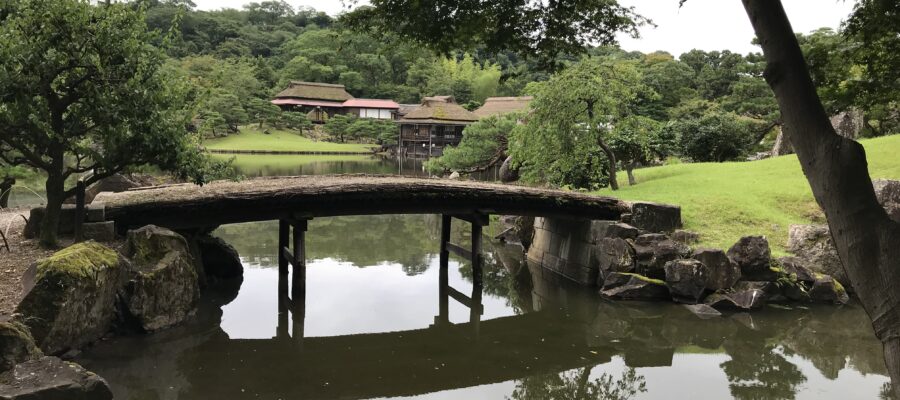彦根状の大名庭園
大阪に住んでいると大名庭園を訪問することは少ないです。よく訪れるのは京都の二条城ぐらいでしょうか。今回訪問した彦根城には、玄宮園があります。この玄宮園は、下屋敷である槻御殿(現楽々園)に伴う後園として、江戸時代前期に作庭されました。
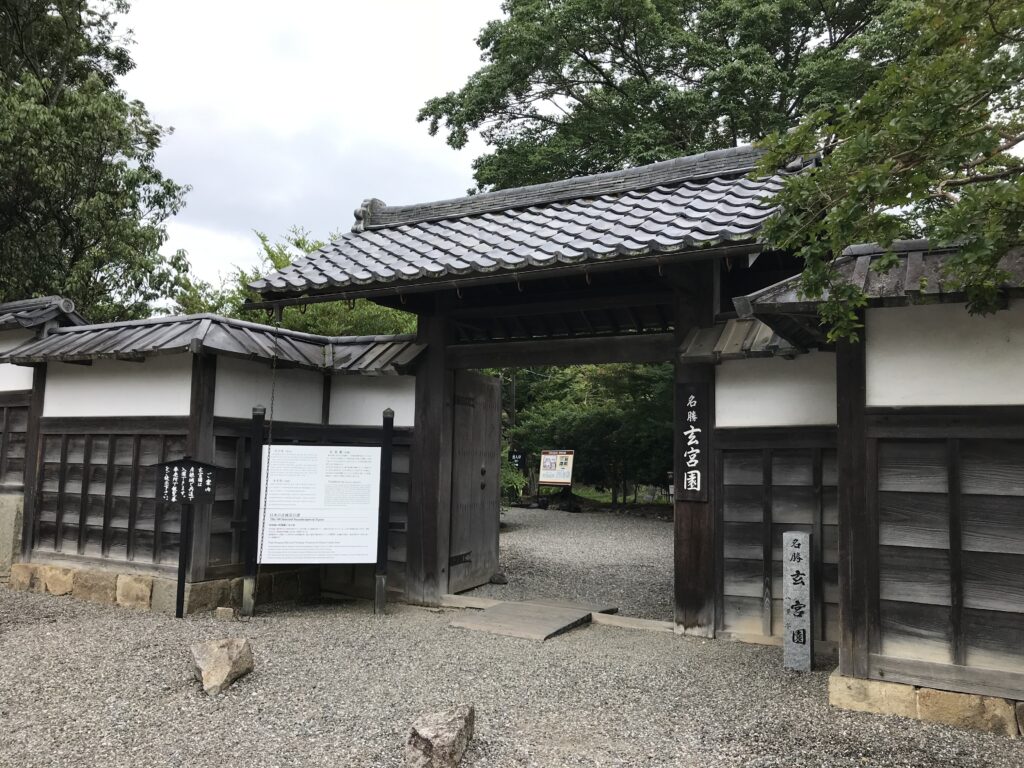
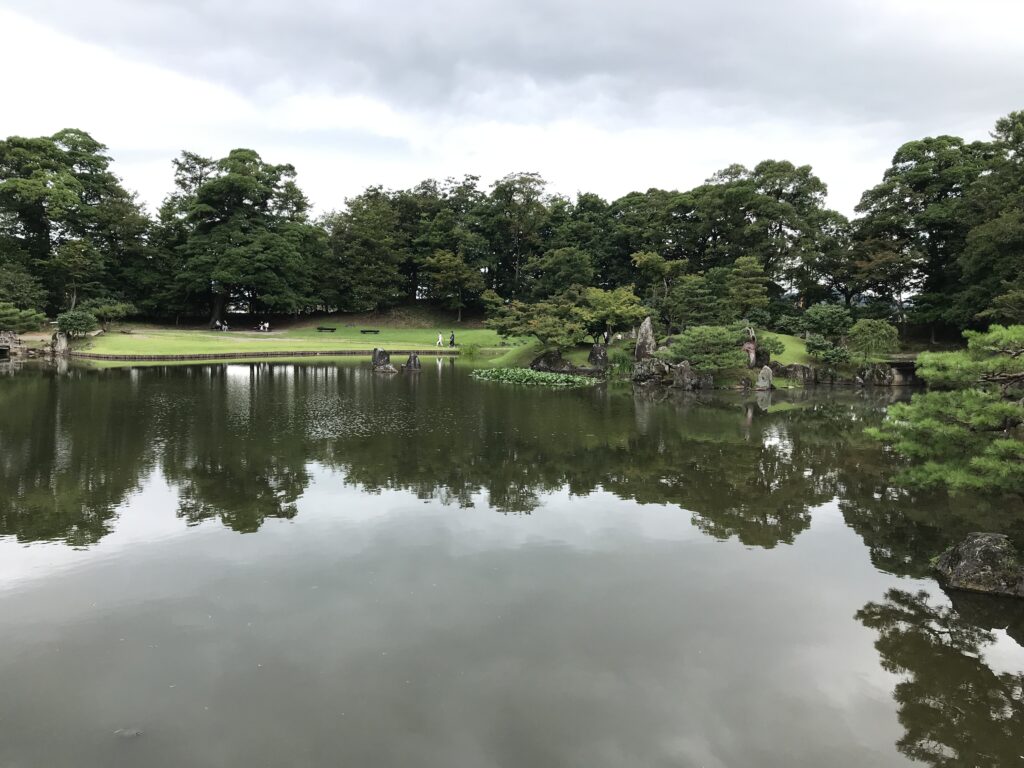
写真でもわかるように、大規模な池泉回遊式庭園です。池には大小4つの中島が築かれています。私も一先ず、池の周りを一周歩いてみることにしました。生憎の曇り空だったのですが、風もなく静かな日でしたので、池の水面も穏やかで、池に映った景色が、実際に見える地上の景色とが対をなしていました。
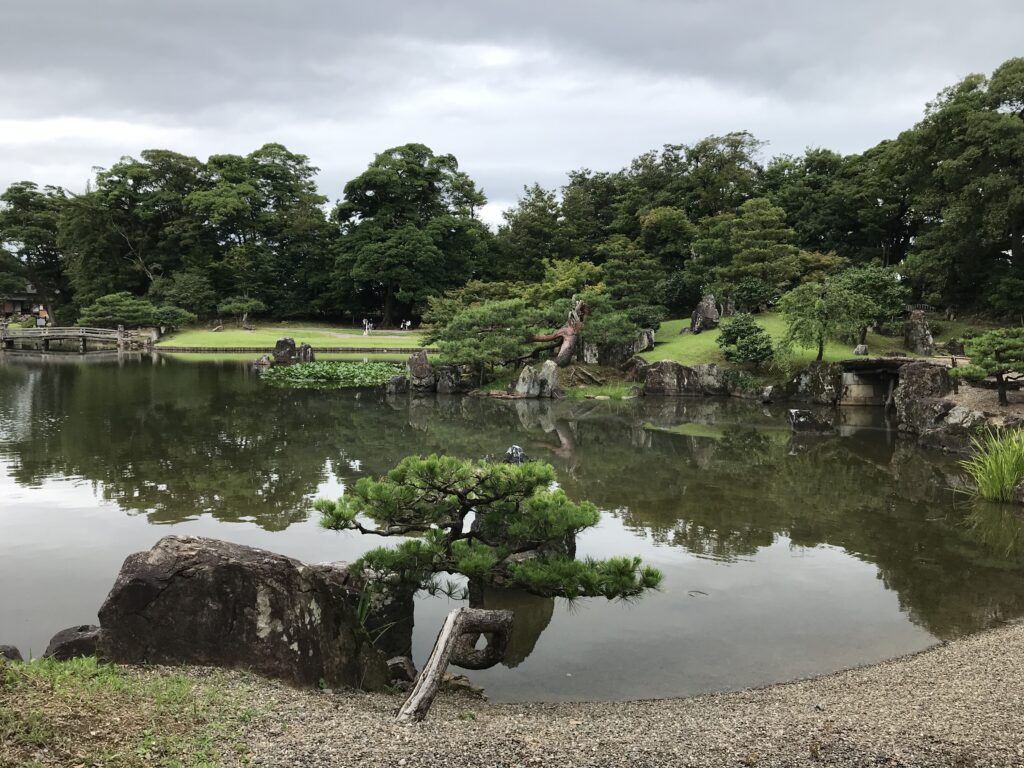
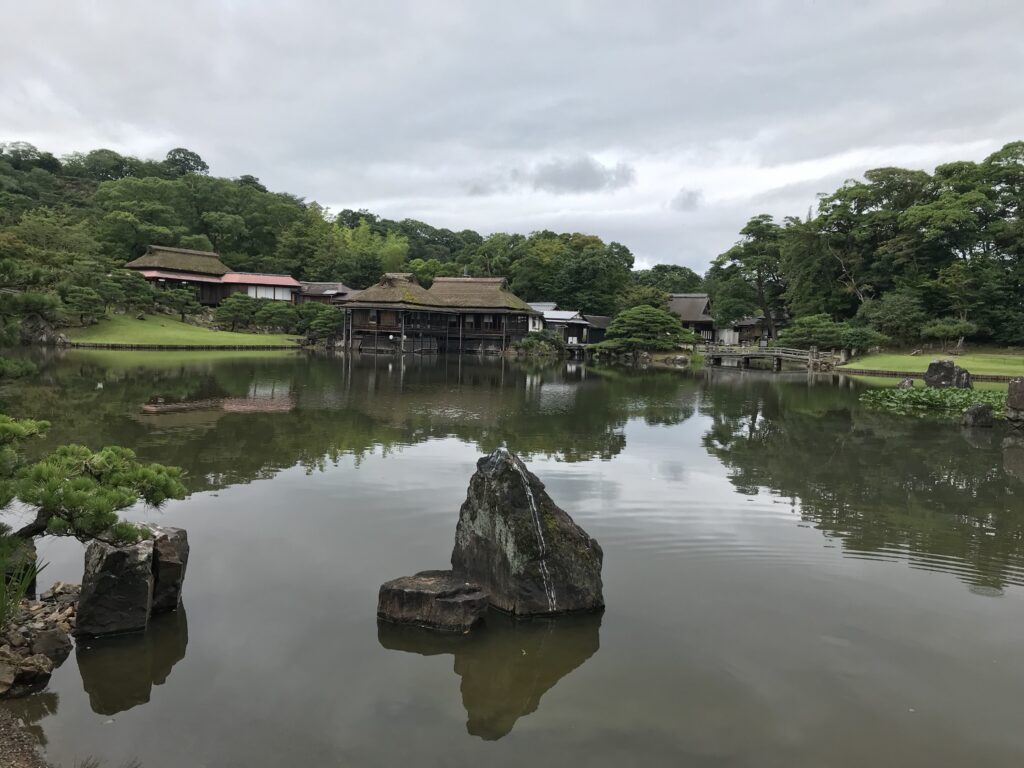
回遊を楽しめる庭園
橋も、木橋や土橋など、変化に富んでいます。対岸からは複数の向こうに天守が現れるようになっていて、回遊を楽しむことができます。小雨が降り出しましたが、多くの方が池の周りの散策を楽しんでいました。
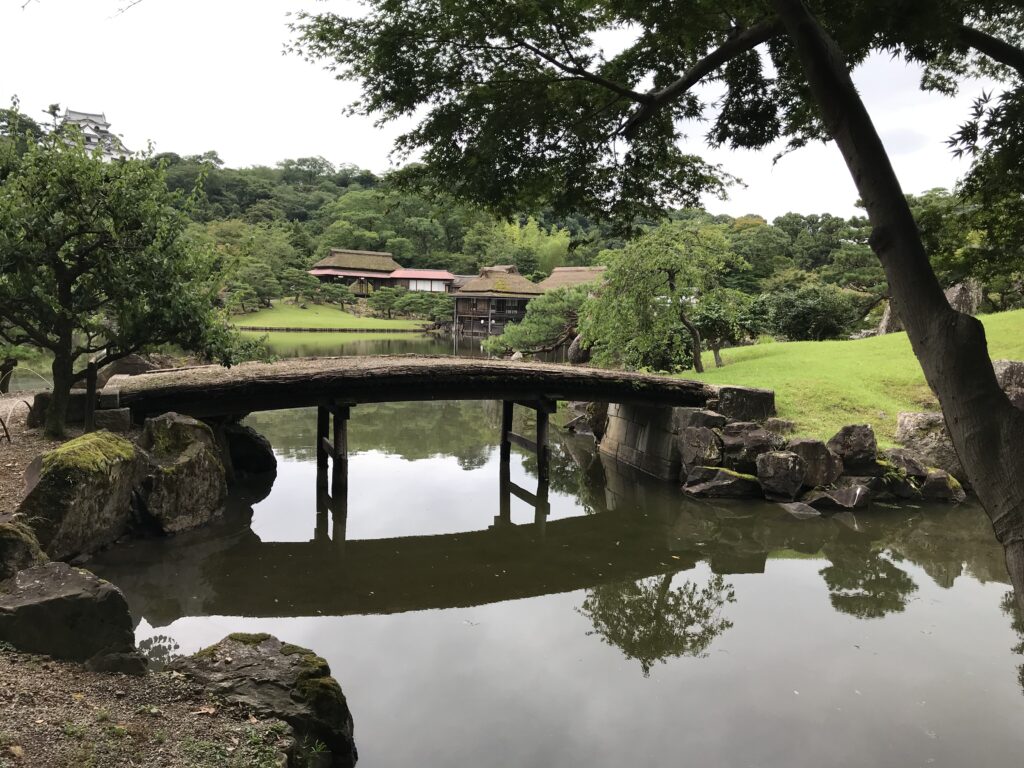
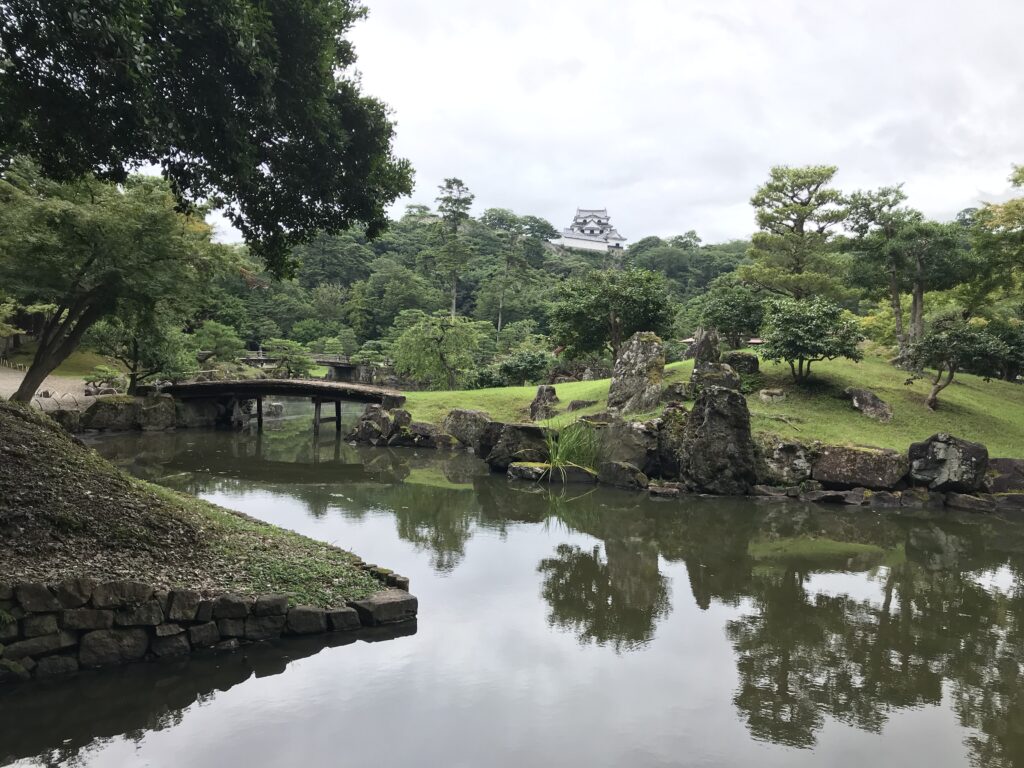
この庭を巡りながら思ったのですが、庭って、どう見ると美しいかを考えながら眺めることが多いのですが、もしかしたら、どう改修したら、自分好みの庭になるかを考えてみた方が面白いのかも知れません。今まで、受け身的な見方を考えていましたが、自分好みの庭を空想してみたいと思いました。
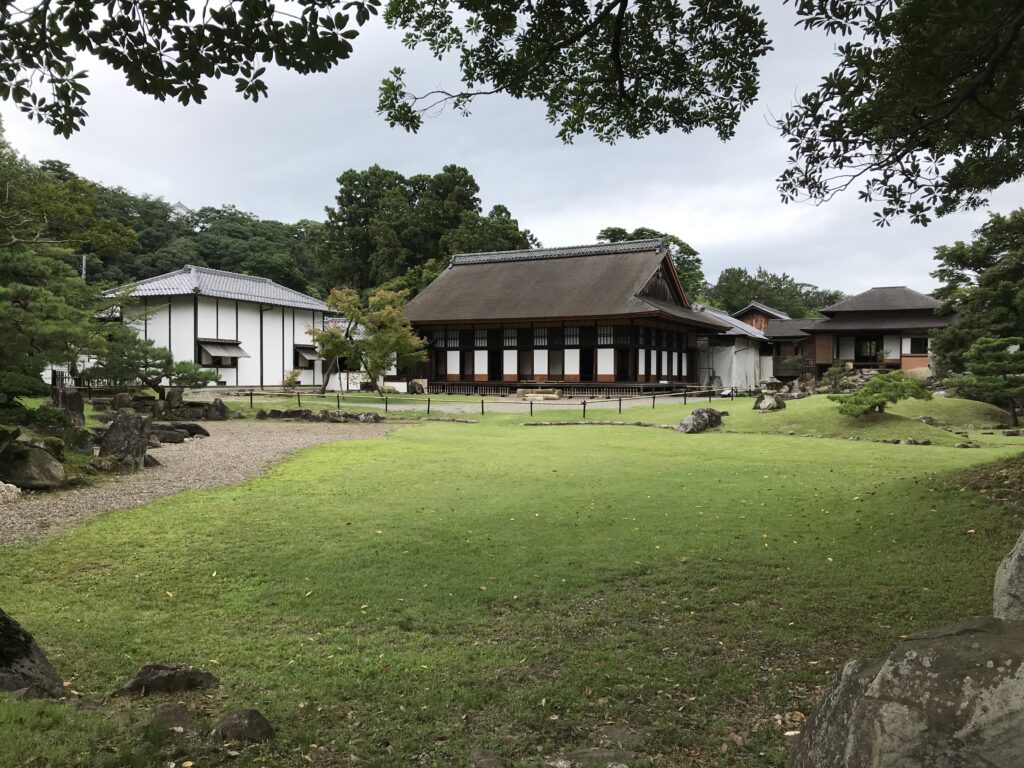
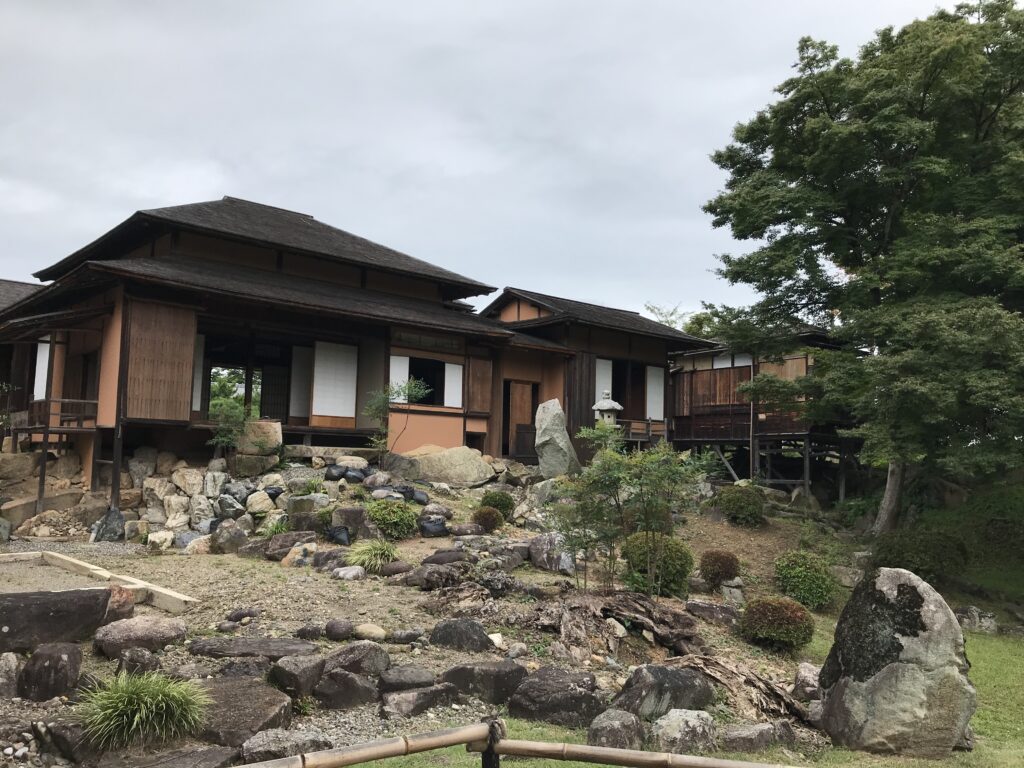
お気に入りの灯篭を発見
庭園の奥にある下屋敷の槻御殿にも行ってみました。建物よりも私の関心を引いたのは、そこで目にした灯篭でした。江戸時代の長い泰平の時代にできた庭ですから、剛直な形の灯篭よりも、すこし軟弱っぽく見えて、それでいて優雅な象形の灯篭が良く似合います。(完)
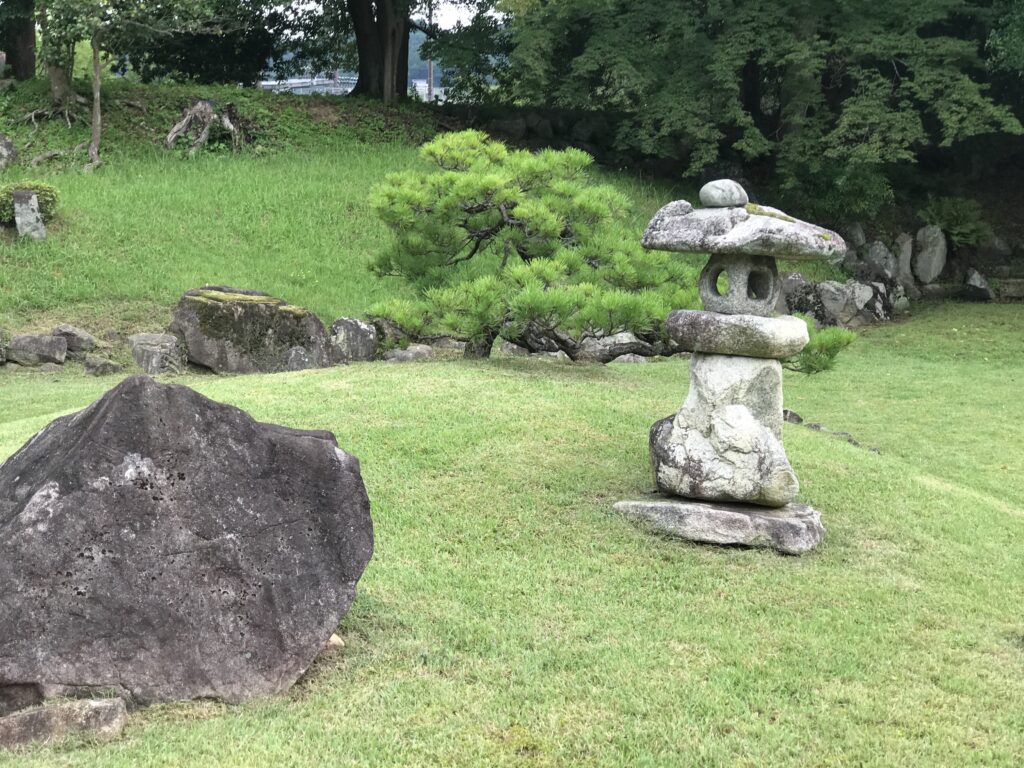
彦根城が紹介されている書籍
小和田哲男氏の「日本100名城の歩き方に」に彦根城が紹介されています。
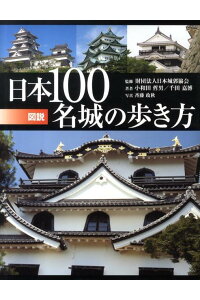
図説日本100名城の歩き方 (ふくろうの本) [ 小和田哲男 ]
価格:1,980円
(2021/7/12 15:38時点)
感想(1件)
Hikone Castle (2) Genkyu-en Garden
Living in Osaka, it is rare to visit the gardens of feudal lords. The only place I often visit is Nijo Castle in Kyoto. Hikone Castle, which I visited this time, has Genkyu-en Garden. Genkyu-en was created in the early Edo period as a rear garden for the Tsuki Palace (now Rakuraku-en), which was the residence of the feudal lord.
As can be seen in the photo, it is a large scale circular garden with ponds. There are four large and small islands built around the pond. I decided to walk around the pond first. It was an unfortunate cloudy day, but it was a calm day with no wind, so the surface of the pond was calm, and the scenery reflected in the pond was a counterpoint to the actual view on the ground.
The bridges are also varied, including wooden and earthen bridges. From the opposite bank, the castle keep appears across several of them, allowing visitors to enjoy a circular tour. A light rain started to fall, but many people enjoyed strolling around the pond.
As I walked around this garden, I thought to myself that I often look at gardens while thinking about how they are beautiful, but perhaps it would be more interesting to think about how they could be renovated to become a garden of my own liking. I had been thinking about how to look at it passively, but now I wanted to fantasize about a garden of my own liking.
I also visited the Tsuki-Goten, a lower residence at the back of the garden. What caught my attention more than the building were the lanterns I saw there. The garden was created during the long peace of the Edo period (1603-1868), so the elegant elephant-shaped lanterns looked a little softer than the rigid lanterns, but still elegant. (End)
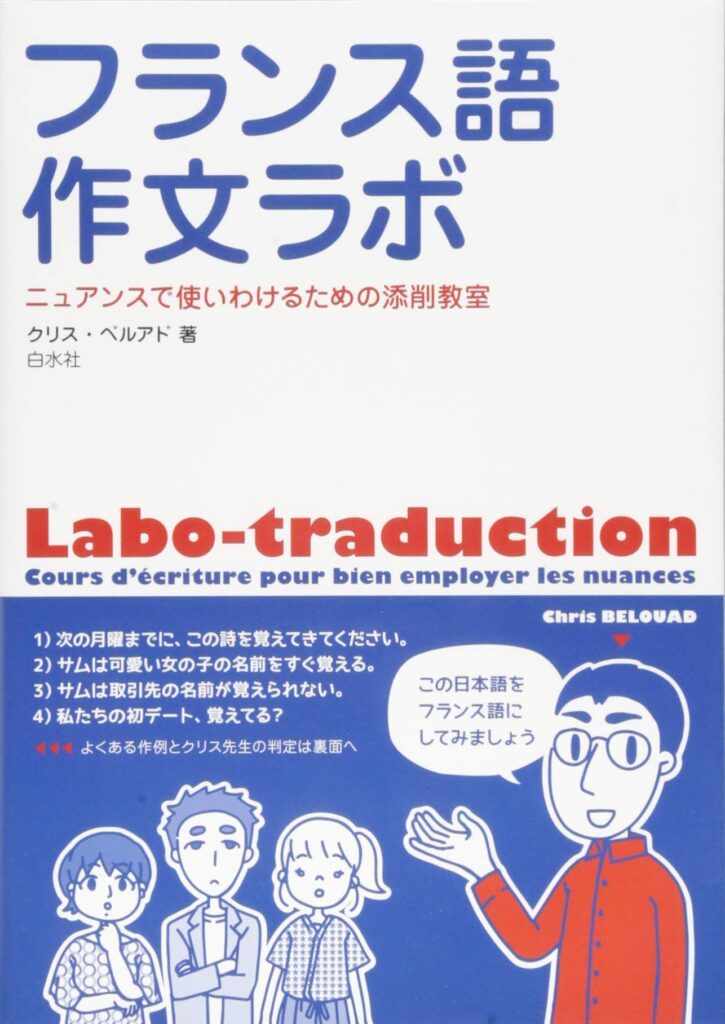
新品価格
¥2,420から
(2022/5/6 23:06時点)
Château de Hikone (2) Jardin de Genkyu-en
En vivant à Osaka, il est rare de visiter les jardins des seigneurs féodaux. Le seul endroit que je visite souvent est le château de Nijo à Kyoto. Le château de Hikone, que j’ai visité cette fois-ci, possède le jardin de Genkyu-en. Genkyu-en a été créé au début de la période Edo comme jardin arrière pour le palais Tsuki (aujourd’hui Rakuraku-en), qui était la résidence du seigneur féodal.
Comme on peut le voir sur la photo, il s’agit d’un jardin circulaire à grande échelle avec des étangs. Il y a quatre grandes et petites îles construites autour de l’étang. J’ai décidé de faire le tour de l’étang en premier. C’était un jour malencontreusement nuageux, mais c’était un jour calme sans vent, donc la surface de l’étang était calme, et le paysage reflété dans l’étang était un contrepoint à la vue réelle sur le terrain.
Les ponts sont également variés, notamment des ponts en bois et en terre. Depuis la rive opposée, le donjon du château apparaît à travers plusieurs d’entre eux, permettant aux visiteurs de profiter d’un tour circulaire. Une pluie légère a commencé à tomber, mais de nombreuses personnes ont apprécié de se promener autour de l’étang.
En me promenant dans ce jardin, je me suis dit que je regardais souvent les jardins en pensant à leur beauté, mais qu’il serait peut-être plus intéressant de réfléchir à la manière dont ils pourraient être rénovés pour devenir un jardin à mon goût. J’avais réfléchi à la façon de les regarder passivement, mais maintenant je voulais fantasmer sur un jardin à mon goût.
J’ai également visité le Tsuki-Goten, une résidence basse située à l’arrière du jardin. Ce qui a attiré mon attention plus que le bâtiment, ce sont les lanternes que j’y ai vues. Le jardin a été créé pendant la longue paix de la période Edo (1603-1868), et les élégantes lanternes en forme d’éléphant avaient l’air un peu plus douces que les lanternes rigides, mais toujours élégantes. (Fin)
